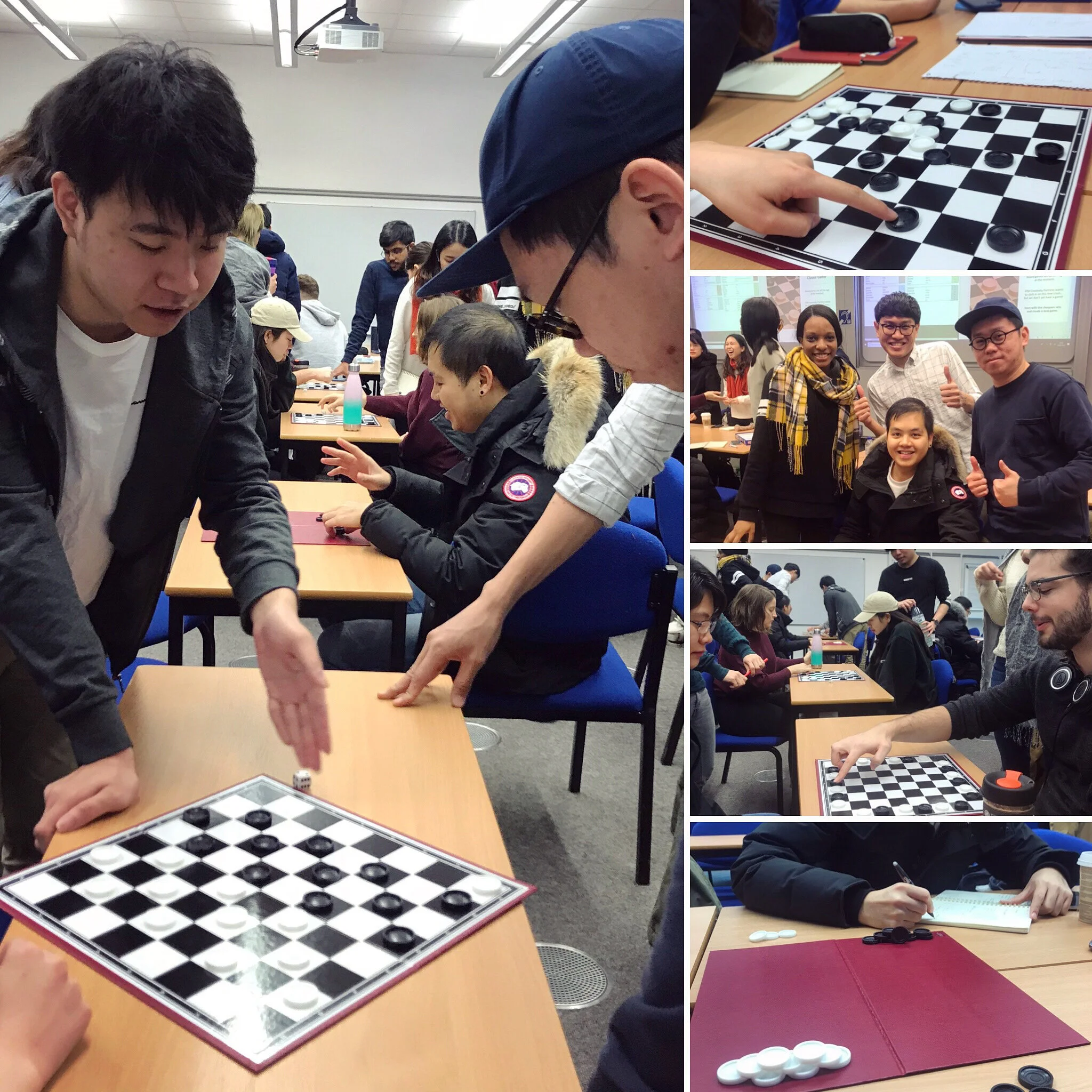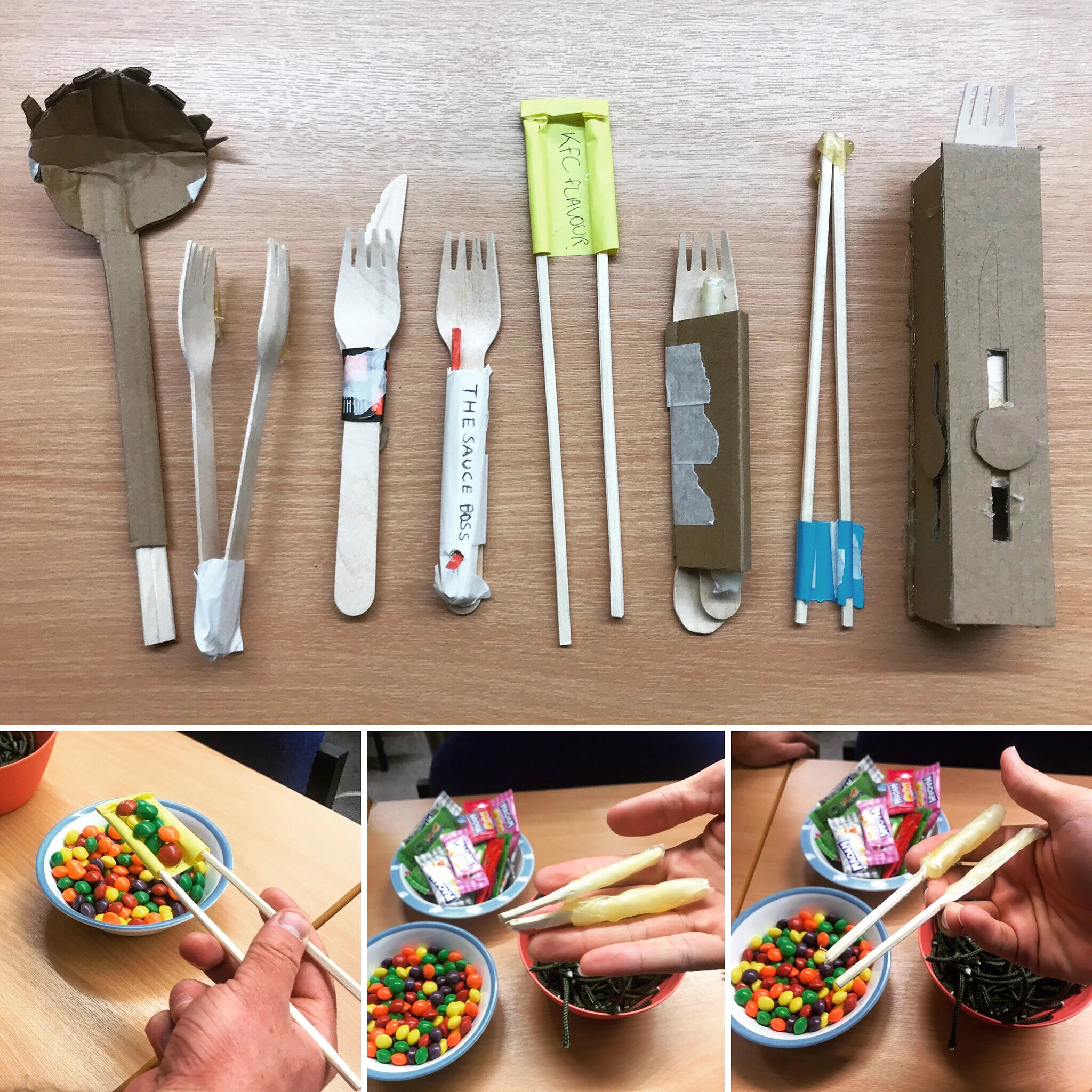ME50360
Creativity for Innovation (Moodle Link)
Where to begin… creativity as a subject is large, complex and means different things to different people.
If this was a class was full of engineers and designers I would focus the course on the complex subtleties of various product development methods, rapid prototyping and the testing of ideas. But this unit is for predominantly for students aiming for business and management roles. So with perhaps less previous design experience we instead hope to improve your creative confidence and your ability to understand and manage the creative process. We must also remember that this is not creativity for creativity’s sake, this is not an arts course. We’re being creative in order to be innovative, to have ideas that are a commercial success. To do that we must learn ways of finding out what the customer wants how to use that for solving the problem and ultimately selling the solution as well.
Creativity is key at every stage of the Innovation process, from having a starting idea, through making it a reality and then finally successfully launching and selling that idea so you can fund the whole cycle again.
As the project progresses so your creative focus will need to change and the task gets harder with more and more people needed at each later stage. Creatives struggle to start, Inventors think they can do it all and Innovators believe ideas are cheap. Welcome along for the ride.





Praise for the unit:
“This whole module was both informative and fun, the lecturers have such a great combination of skills and knowledge, and great rapport, which made the module my favourite of both under and post graduate.”
“Was engaging, relatable and exciting”
“Very useful skills in this unit and we all enjoyed the ways the professors taught, the classes are amazing.”
“The teaching staff is very good. I think that this module is very useful and it changed the way I think. I really enjoyed this module and Ed is an inspiring person.”
“It was one of my favourite classes because it really helped me stimulate and find ways to access my creative thinking process. Amazing professors to learn from as well.”
Creativity is as important now in education as literacy, and we should treat it with the same status.
Sir Ken Robinson
Ed’s Innovation Castle v3
Contents:
Having Good Ideas:
Humans are Creative, We Can All Have Good Ideas - The History of Creativity - How we evolved to be creative and what the ancient world can teach us about technology development today.
Everyday Creative Thinking - How Ideas Happen - Steven Johnson’s 7 traits of good ideas and why creativity ultimately is all about finding ways of untapping your unconscious mind.
Tools & Methods for Generating Ideas on Demand - Brainstorming & Others - Tips, tricks and methods for having ideas when you need them.
Good Ideas Need Diversity of Thought & Avoiding ‘Idea Fixation’ - A common problem for creative problems is becoming fixated on a single idea or approach. This is unhealthy for the project and there are ways to stop it happening.
How to Understand the Problem / Customer:
Marketing & Market Research - Market research is about finding the lock that opens the best chest, then making a key to fit. Not the other way around. Study your market so you know what they want and need.
User Observations and Testing - A more expert driven rather than data driven method - For any new project to succeed you need to understand the customer’s needs, intentions and actions, even if they don’t fully understand them themselves. A good way to do that is not to ask them, but to observe them and work out what they really want and need.
No One is Average (and other surprising human factors that I’ll keep adding to when I find them) - The world of average is all pervasive, but despite being a useful mathematical tool it’s a horrible method for understanding or designing for people.
Tools & Methods for Exploring Problems - The Russian Method of TRIZ - The Russian theory of inventive problem solving. How to use a structured approach to find the real problem worth solving and narrow down the range of possible answers to only the ones likely to succeed.
Minimum Viable Products - Testing the Most Important Element - The best way to test a market is through a series of quick experiments. MVPs are those experiments to test your assumptions and find product market fit, it is not about launching a bugger product quickly.
How to Manage the Creative Process:
The Idea / Creative Lifecycle - The transformation of an idea from an incubating thought through to reality tends to follow the same pattern. Understanding this pattern is helpful in doing it faster.
Creative Process Models - Maps of what to do next - Creativity is a very hard thing to predict and structure but lots of people have tried and some methods such as stage gates and design thinking are now common place corporate terms. I like to think of the prescriptive versions of these models as being like maps. Something to follow to help you get from A to B.
The 2 Reasons Why Projects Fail and What That Means for Yours - There are countless ways to fail, but they can all be grouped together into two categories, HOW to do something problems or WHY you’re doing it problems.
A Process Map for any Project - The ‘Fuzzy to Finished’ Development Model - Established design processes usually always start with a “define the problem” step and then a series of “solve the problem” steps. For Novel WHY problems this isn’t helpful. Both the defining and the solving need to be done in parallel.
A Process Compass for any Project - A way of keeping track of the risks in your project - Always trust your compass, the map might be wrong or incomplete, but a good compass will always get you out of trouble. It’s the same with project management. Practise using a WHY / HOW compass to navigate any challenge.
How to Maintain Creativity in Large Firms:
Established Company Innovation - How large companies try to maintain that creative spirit - How success can be a trap, intrapreneurs and the challenges of new ideas. How to stay creative and dynamically innovative even as your company grows and becomes more bureaucratic.
Soldiers & Artists - Balance these two roles like a gardener rather than a prophet - The different people and mindsets needed for any business to succeed at scale. They are different but must work together in balance. Also my own idea of different operating modes that aligns with this, Preservation vs Discovery.
Plus in-depth Q&As and class activities from our team of professional designers and entrepreneurs.
Creative Task Examples:
Sometimes the best way to learn something is to watch other people do it. A series of creative challenges were set for the class and here is the effort to solve the same challenge by the teaching team:
Improving and growing a local coffee shop and café - February 2021

